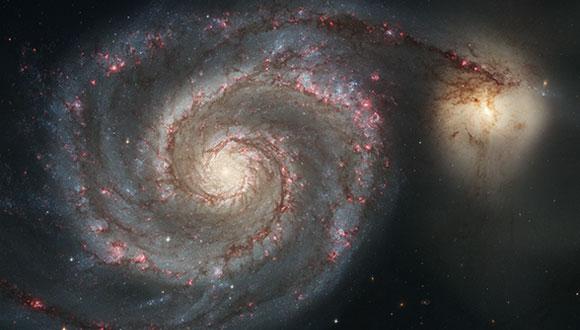Astronomy & Astrophysics Seminar
Tamir Cohen & Aviya Tsoref, TAU
Zoom: https://tau-ac-il.zoom.us/j/87230679135?pwd=Y1duRlArUkJwSnhaaXVscUU0azY3Zz09
Speaker: Tamir Cohen
Luminous High Redshift AGNs and Their Host Galaxies
Abstract:
The evolution of supermassive black holes (SMBHs) is thought to be closely related to the star formation (SF) in their host galaxies, with both forms of mass growth peaking at z~1-3. I will present an ALMA-based study of 30 luminous quasars located at z~2-3.5, with the goal to assess the SF activity in the hosts of the most luminous quasars known, tracing the epoch of peak SMBH growth. About 67% of the targeted quasars were detected in our short, 224 GHz continuum observations (rest-frame wavelengths of ~300-450 um). We found a wide range of star formation rates, SFR~50-3500 Msol/yr, with 27% of our sources exceeding the 1000 Msol/yr mark and thus considered as starbursts. This wide range in SFR among hosts of luminous quasars, powered by high-mass SMBHs, indicates that so-called ``AGN feedback'' does not suppress SF activity in such systems. I will further argue that the observed period of enhanced SMBH and host growth cannot persist for more than a few 100 Myrs. Finally, we found no obvious link between high AGN activity and major galaxy mergers, with a companion detection rate of only <7%.These findings emphasize the diversity of quasar host galaxies and the seemingly uncorrelated growth paths they may undergo.
Speaker: Aviya Tsoref
AT 2021aekl: a Peculiar Changing-Look Active Galactic Nucleus
Abstract:
Changing-Look Active Galactic Nuclei (CL-AGN) exhibit extreme flux and spectral variations on timescales of a few years or less, and thus challenge our basic understanding of AGN structure and accretion physics. In this talk, I will examine the case of AT 2021aekl, a peculiar CL-AGN that experienced an optical flare, as well as a spectral transformation from a narrow-line to a broad-line AGN. I will present a year-and-a-half-long spectroscopic monitoring campaign of this source post-flare, aiming to temporally resolve the rapid CL transition. Surprisingly, although the relatively short flare lasted less than 3 months, the newly discovered broad lines persisted for the entirety of our campaign, without significant dimming. I will discuss several scenarios that address flares and spectral transitions in AGN, including tidal disruption of stars and the close links between line-emitting regions and the accretion disk. AT 2021aekl exemplifies the variety of extreme AGN variability events and the need for responsive multi-wavelength observations.
Seminar Organizer: Dr. Jonathan Stern


